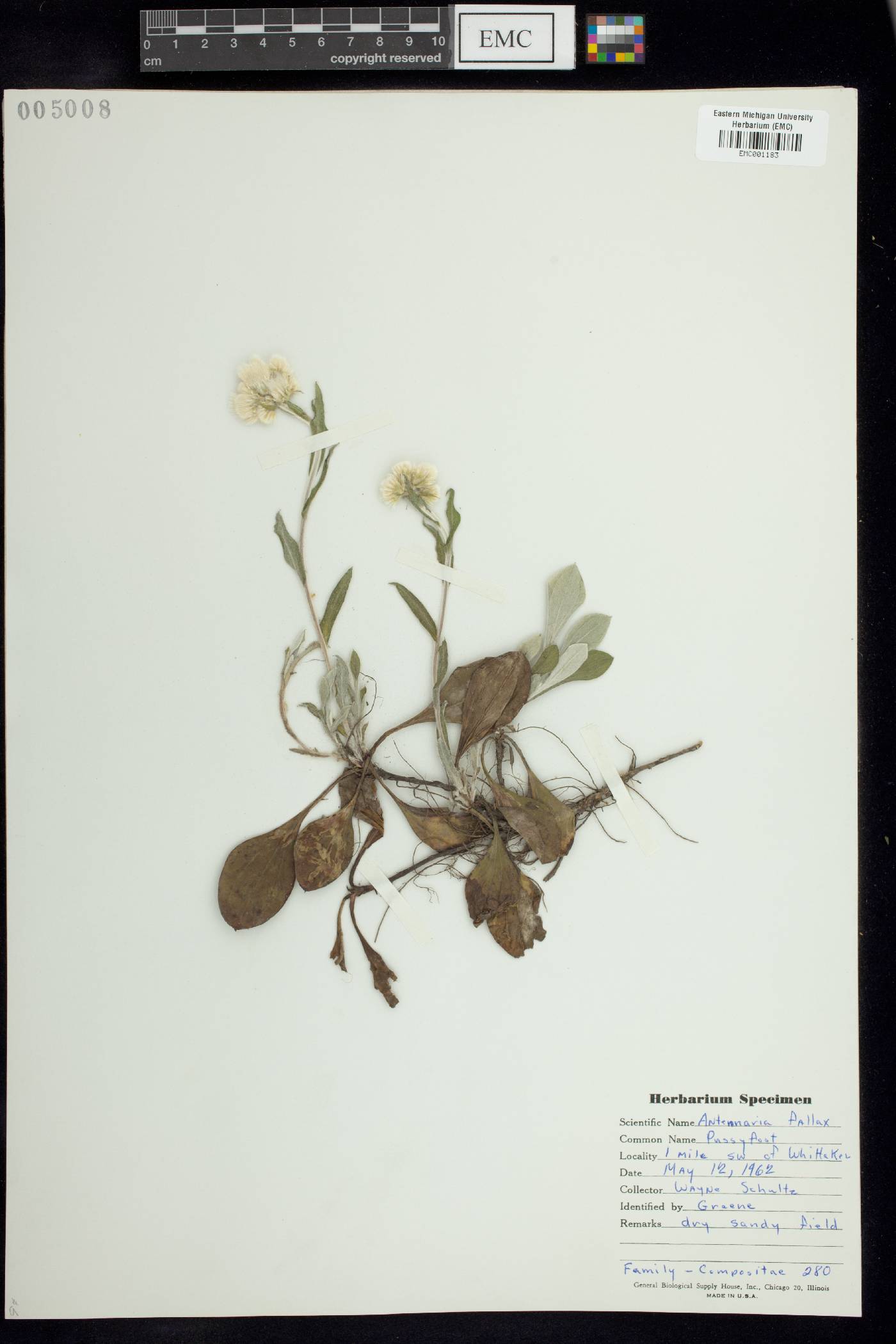
|
Family: Asteraceae |
Perennials or subshrubs (dioecious, gynoecious, or polygamodioecious), (0.2-)4-25(-70) cm (sometimes cespitose, sometimes stoloniferous, sometimes rhizomatous). Stems erect. Leaves basal and cauline; alternate; petiolate or sessile; blades (1-7-nerved) mostly cuneate, elliptic, lanceolate, linear, oblanceolate, or spatulate, margins entire, abaxial faces usually tomentose, adaxial glabrous or ± tomentose to sericeous or glabrescent. Heads discoid (unisexual), borne singly or in corymbiform, paniculiform, racemiform, or subcapitate arrays. Involucres: staminate campanulate to hemispheric, 2-6+ mm diam.; pistillate turbinate or campanulate to cylindric, 3-7(-9+) mm diam. Phyllaries in 3-6+ series, usually relatively narrow, unequal (proximally papery or membranous; distally ± scarious, often black, brown, castaneous, cream, gray, green, olivaceous, pink, red, white, or yellow), apices usually acute, sometimes obtuse to ± truncate. Receptacles flat to convex or ovoid, foveolate, epaleate. Ray florets 0. Disc florets mostly 20-100+, (functionally) staminate or pistillate; staminate corollas white, yellow, or red, narrowly funnelform or tubular (lobes usually 5, erect to recurved); pistillate corollas white, yellow, or red, narrowly tubular to filiform. Cypselae mostly ellipsoid to ovoid, faces usually glabrous, often papillate (stout, myxogenic twin-hairs); pappi: falling (bristles basally connate or coherent, shed together in rings or in groups); staminate usually of 10-20+ (usually ± clavate, sometimes capillary, barbellate to barbellulate) bristles; pistillate usually of 12-20+ (capillary, barbellulate to smooth) bristles. x = 14. Dioecious; invol bracts imbricate in several series, scarious at least at the tip, white or often colored; receptacle flat or convex, naked; staminate heads discoid, with tubular corollas, usually undivided styles, and scanty pappus, the bristles commonly barbellate or clavellate; anthers tailed; pistillate heads disciform, with filiform-tubular cors, bifid styles, and copious pappus of capillary, naked bristles weakly united at base; achenes nerveless, terete or nearly so, glabrous or papillate; woolly perennial herbs, ours fibrous-rooted, stoloniferous, and mat-forming or colonial; lvs alternate, simple, entire, in our spp. the largest ones basal and at the ends of the stolons; heads rather small, (1-) several in terminal infls; x=14. 30+, mainly N. Amer., especially the w. cordillera. Our spp. 3-6 form a polyploid-apomictic complex. Absence of staminate plants from a local population indicates apomixis. Gleason, Henry A. & Cronquist, Arthur J. 1991. Manual of vascular plants of northeastern United States and adjacent Canada. lxxv + 910 pp. ©The New York Botanical Garden. All rights reserved. Used by permission. |
This project was made possible in part by the Institute of Museum and Library Services [MG-70-19-0057-19].
Powered by Symbiota



